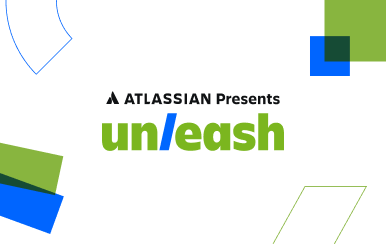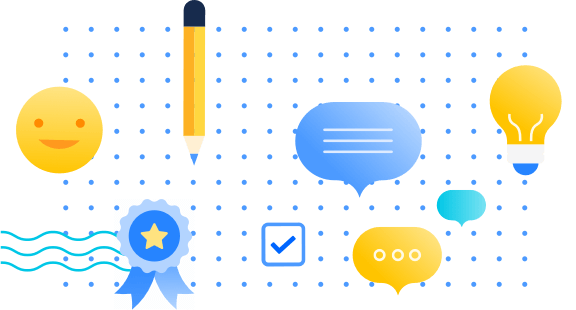Candidate Resource Hub
Browse topics
Interviewing
Atlassian product design interview handbook
Learn what it's like to interview for a design role at Atlassian.
Many design candidates encounter interview processes that are stressful by design, with candidates purposefully tested to see how they perform under pressure. But when a candidate is stressed, it’s hard to understand what they can actually do and whether they’d add value to the team. On Atlassian’s Design team, and across the company, we work hard to make sure that every candidate is set up for success. We want candidates to feel that they can bring their most authentic selves into the process, because we know that means showcasing their best work.
In part, that means doing everything we can to ensure our candidates feel comfortable on the big day. But it also means making sure you know what to expect well beforehand.
Below, you’ll find a guide to the Atlassian design interview, along with tips on what we look for and common pitfalls to avoid. We hope it helps you navigate the process—and in turn, helps us add great people to our team.
Recruiter screen and hiring manager interview
Your first two steps in the design interview process at Atlassian will be a recruiter screen and a hiring manager interview. The recruiter screen will be an informal 30 minute chat about your background, skills, and goals where we can get to know you and your career aspirations better.
The next stage will be an in-depth interview with the hiring manager to discuss the role, your expertise, and why you want to be an Atlassian.
Portfolio review
In this hour-long session, we’ll cover two of your past projects*. You should be prepared to speak to how you defined the problem space and how you evaluated success, as well as to the work itself. Individual contributor candidates should expect a deep dive into the details of the choices you made, while with management candidates, we’ll talk more about how you led the team and shaped the final result.
*For research roles, you’ll present a few case studies you’ve worked on, and for content design roles, you’ll share writing samples.
Keep in mind that while the projects you choose are important, the design of a portfolio itself matters, too. A couple of tips:
- Show us a recent project, preferably from the past 3-4 years.
- It’s time-consuming but worthwhile to put your portfolio together thoughtfully, rather than simply jumping between preexisting PDFs or sharing entire Sketch files.
- Pay attention to detail, just as you would in your product design work, from how you use typography and how much text you put on each page, to how you frame your images and highlight the most important information.
- Share your approach, structured process, the core problems you were solving for, and, of course, the final outcome of each project. We will also take into account time management, cross-collaboration, success metrics, and learnings from a project. We’re looking to understand your process as well as the impact of your work.
This session is also an opportunity to showcase your communication skills. Storytelling can be a big part of the job—you may need to quickly get leadership up to speed on a project or succinctly explain your rationale and goals to a teammate. So during a portfolio review, be sure to give us the context we’ll need to understand your work before diving in. Explain what the company you were working for does, and explain your role as well. We understand most projects are collaborations, so be upfront about your specific contributions.
“We want candidates to feel that they can bring their most authentic selves into the process, because we know that means showcasing their best work.”
Squad interview
If you’re applying for a role that will work closely with counterparts from Engineering and Product (including most managers and some ICs), you may also meet with them in what we call a “squad interview.” This is an opportunity to understand how you might work together; you’ll discuss topics like how to approach trade-offs, how you view the role of design, and how you collaborate. Mostly, it’s an opportunity to get to know each other—to figure out if you would be excited to work together and challenge one another.
Research and content design candidates may also have squad interviews, though these roles often work across multiple triads. If you’re interviewing for a highly technical role, such as a content designer for developer standards, you may also have an additional interview with a developer, so we can assess your basic technical knowledge. For Product and Senior Product Designers, an optional coffee chat with a Squad interviewer may occur.
Values interview
Finally, like every candidate interviewing for a role at Atlassian, you’ll have a 45-minute “values interview,” likely with someone who isn’t a member of the team you’ve applied to join.
These sessions are relaxed, conversational, and not necessarily about the role, though questions are tailored for managers and ICs. We encourage you to use the Star method for our values interview, where you describe the situation, task, action, and result. You can also draw on any experience you have, including but not limited to work. Our goal is to understand how you think and work with others.
And whether it’s during the values interview or throughout the day, we welcome questions from you, too. Every interview should be a two-way conversation, and we want candidates to bring their authentic selves to work, just like we do—so if something’s on your mind at any point, please feel free to ask.
What are our 5 values? Learn about them here.
After the interview
When each interviewer finishes their meeting with you, they’ll write down feedback as soon as possible, then we’ll all meet to discuss. Your interviewing team will get together and follow an unbiased process to decide whether you’re a great fit for Atlassian.
The outcome will always be backed with evidence from your interviews that has led us to our decision or offering you a different position we think you’re best suited to. In Product Design, there are usually multiple roles of the same type open at one time, so we aim to match you to the perfect role for your skills, level, and experience.
Regardless of the outcome, it’s our goal to always provide feedback so you know where you did well and where you might improve. From your portfolio review to your values interview and everything in between—if you apply for a job with us, we will consider it our job to help you succeed.
We want our Design team, and its leadership, to be fully representative, from gender and sexual orientation to race and religion to educational background, and we’re working hard to get closer to that goal.
When we say we want to “unleash the power of every team,” that includes our own—and it requires not only building up the diversity of thought and background in design at Atlassian but also helping each individual, whether they’re already on our team or just interviewing for a role, to grow and thrive.
If you’re excited about our mission, value autonomy, and want to be a better designer every day, we hope that you’ll join us—and that this guide will help you take the first step on a long and successful journey.
Adjustments for individual needs
To ensure you have the best candidate experience possible, please let your Talent Acquisition Partner know what accomodations or adjustments you require at any stage of the recruitment process.

